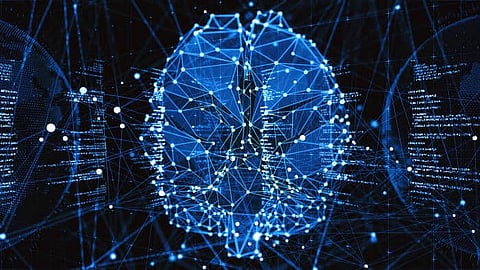

Deep learning offers the promise of bypassing the procedure of manual feature engineering by learning representations in conjunction with statistical models in an end-to-end fashion. In any case, neural network architectures themselves are ordinarily designed by specialists in a painstaking, ad hoc fashion. Neural architecture search (NAS) has been touted as the way ahead for lightening this agony via automatically identifying architectures that are better than hand-planned ones.
Machine learning has given some huge achievements in diverse fields as of late. Areas like financial services, healthcare, retail, transportation, and more have been utilizing machine learning frameworks somehow, and the outcomes have been promising.
Machine learning today isn't constrained to R&D applications however, has made its foray into the enterprise space. However, the conventional ML process is human-dependent, and not all companies have the assets to put resources into an experienced data science team. AutoML might be the answer to such circumstances.
AutoML focuses on automating each part of the machine learning (ML) work process to increase effectiveness and democratize machine learning so that non-specialists can apply machine learning to their issues effortlessly. While AutoML includes the automation of a wide scope of problems related with ETL (extract, transform, load), model training, and model development, the issue of hyperparameter enhancement is a core focus of AutoML. This issue includes configuring the internal settings that govern the conduct of an ML model/algorithm so as to restore a top-notch prescient model.
Creating neural network models frequently requires noteworthy architecture engineering. You can sometimes get by with transfer learning, yet if you truly need the most ideal performance it's generally best to structure your very own network. This requires particular skills(read: costly from a business point of view) and is challenging in general; we may not know the cutoff points of the present cutting edge methods! It's a ton of experimentation and the experimentation itself is tedious and costly.
The NAS discovered architecture is trained and tried on a lot of smaller-than-real world dataset. This is done in light of the fact that training on something enormous, like ImageNet, would take an extremely significant time-frame. In any case, the thought is that a network that performs better on a smaller, yet comparatively organized dataset should likewise perform better on a bigger and progressively complex one, which has commonly been valid in the deep learning time.
Second, is that the search space itself is very constrained. NAS is intended to construct architectures that are fundamentally the same as in style to the current state-of-the-art. For image recognition, this is to have a set of repeated blocks in the network while continuously downsampling. The set of blocks to browse to manufacture the rehashing ones are additionally usually utilized in current research. The principal novel part of the NAS discovered networks is the manner by which the blocks are connected together.
The demand for machine learning systems has taken off in the course of recent years. This is because of the achievement of ML in a wide range of applications today. Nonetheless, even with this unmistakable sign, that machine learning can give lifts to specific organizations, a lot of organizations struggle to deploy ML models.
To start with, they have to set up a team of seasoned data scientists who order a top-notch pay. Second, regardless of whether you have an extraordinary team, choosing which model is the best for your concern frequently requires more experience than information. The achievement of machine learning in a wide scope of applications has led to a consistently developing demand for machine learning frameworks that can be utilized off the rack by non-experts. AutoML will, in general, automate the greatest number of steps in an ML pipeline, with a minimum amount of human effort and without trading off the model's performance.
Argonne analysts have made a neural architecture search that automates the development of deep learning-based predictive models for cancer data. While expanding swaths of collected information and growing sizes of computing power are assisting with improving our comprehension of cancer, further improvement of data-driven strategies for the disease's diagnosis, detection and prognosis are necessary. There is a specific need to grow deep learning techniques -; that is, machine learning algorithms equipped for extracting science from unstructured information.
Analysts from the U.S. Division of Energy's (DOE) Argonne National Laboratory have made progress toward accelerating such efforts by exhibiting a strategy for the automated generation of neural networks.
Architecture search has become unmistakably increasingly proficient; finding a network with a single GPU in a single day of training as with ENAS is quite astonishing. In any case, our search space is still actually very constrained. The present NAS algorithms despite everything utilize the structures and building blocks that were hand-planned, they simply set up them together in an unexpected way!
A solid and conceivably groundbreaking future direction would be a far more extensive-ranging search, to truly search for novel architectures. Such algorithms may uncover significantly increasingly hidden deep learning insider facts within these huge and complex systems. Obviously, such search space requires efficient algorithm design. This new bearing of NAS and AutoML gives exciting challenges to the AI community, and actually a possibility for another breakthrough in the science.
Join our WhatsApp Channel to get the latest news, exclusives and videos on WhatsApp
_____________
Disclaimer: Analytics Insight does not provide financial advice or guidance. Also note that the cryptocurrencies mentioned/listed on the website could potentially be scams, i.e. designed to induce you to invest financial resources that may be lost forever and not be recoverable once investments are made. You are responsible for conducting your own research (DYOR) before making any investments. Read more here.
